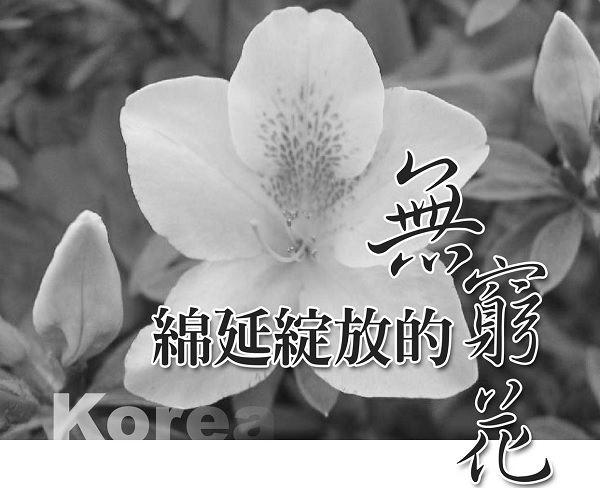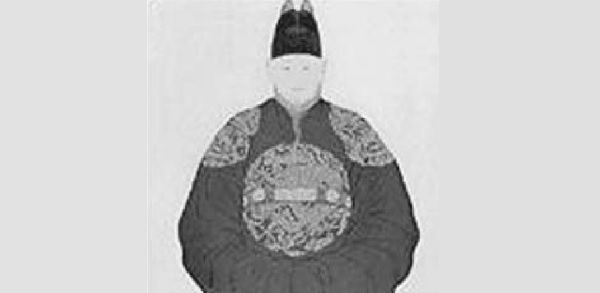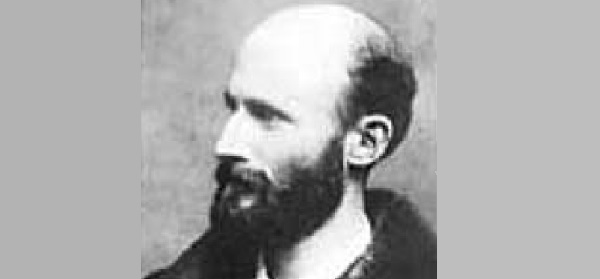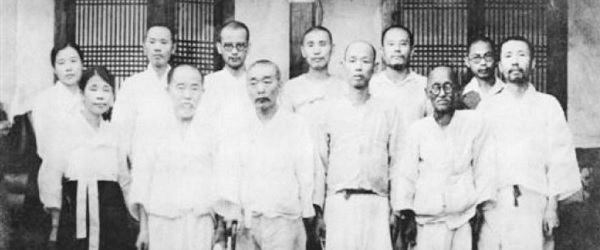Continuously blooming infinite flowers: Characteristics of the historical development of the Korean Church

The Korean Peninsula, located in the northeast corner of the Asian continent, extends into the Sea of Japan and the Yellow Sea, which are rich in seafood. It is adjacent to China through the natural barriers of Changbai Mountain and the Yalu River; it faces Japan across the Tsushima Strait. In this land that still seems to be attached to the mainland but is isolated by mountains and rivers, a nation with bright temperament and pure essence has been nurtured. For thousands of years, it has remained strong despite political, economic, and military turmoil. Just like the Infinity Flower, the national flower of Korea, even if it blooms in the morning and fades in the evening, it continues to bloom and is passed down from generation to generation.
It was also here that Zheng Douyuan alone brought the good news of God's saving grace, just like the first infinite flower that sprouted its pistil. Even though it disappeared in an instant, the flower message was spread. During this period, despite the scorching heat and severe winter, it could not stop its strong vitality. More than two hundred years later, although the Iron Curtain blocked the northern part of the peninsula, the brocade could not be seen. But in the big cities and towns in the southern part of the peninsula, in the streets and alleys, whenever night falls, neon crosses light up, like endless blooming flowers, persistently spreading the fragrance of Christ.
Continuous scissors, chaos remains—Relationships with neighbors China and Japan
The special geographical location of the Korean Peninsula, bounded by mountains and rivers and surrounded by sea on three sides, is sufficient to provide natural protection for an independent society and political power, but it is still inseparably connected to the land of Asia. This situation has resulted in a tangled relationship between North Korea and its neighbors, China and Japan.
In "Historical Records" written by Sima Qian of the Han Dynasty, it was recorded that at the end of the 11th century BC, at the end of the Shang Dynasty, Jizi, the uncle of King Zhou, introduced the etiquette system at that time to the Korean Peninsula and made him a prince of the Zhou Dynasty.

▲Ri Sung-gye, the founding monarch of the Joseon Dynasty.
After that, even though Emperor Wu of the Han Dynasty conquered Korea and established the so-called "Four Han Commanderies" in the northern part of the peninsula, Koreans sometimes resisted and even became independent. When China faced attacks from the Xiongnu and Xianbei from the north, its power on the Korean Peninsula also weakened relatively. After the integration of forces, the three kingdoms of Silla, Baekje, and Goguryeo were formed. During the Tang and Song Dynasties, Silla and Goryeo successively unified the Korean Peninsula; the Goryeo Dynasty had a close relationship with the Song Dynasty and was also a vassal of the Yuan Dynasty. In 1392 AD, during the reign of Emperor Taizu of the Ming Dynasty, Li Chenggui established the Li dynasty and was canonized by the Ming Dynasty starting from Emperor Taizong.
In 1896, during the Xuantong period of the late Qing Dynasty, Russia supported Emperor Gaozong's ascension to the throne and established the Korean Empire. After the Russo-Japanese War in 1904, the power was controlled by Japan. In 1910, Japan and South Korea signed a treaty, and Japan officially annexed the Korean Peninsula and carried out colonial rule. When World War II ended in 1945, Japan was defeated and surrendered. The Korean Peninsula was taken over by the United States and the Soviet Union, and the 38th parallel was used as the boundary to divide North and South Korea.
Looking at the history of Korea, due to its location between China and Japan, the ethics of respecting the elderly and the virtuous in Confucianism continues to influence today's society, which can be seen from the fact that many honorifics are still used in the language. Although it is rare to write Chinese characters, many Chinese and Japanese phrases can still be recognized in spoken language, such as pieces of paper (i.e., notes, letterheads), and building (same as Japanese, i.e. buildings). 1
At the same time, North Korea often becomes a victim of the two countries' expansion of power. It has been subordinate to China for a long time and its political power has been restrained. For example, during the Yuan Dynasty, the Korean Peninsula was used as a springboard to attack Japan. Japan, which was bent on expanding outwards, was always eyeing the country and invaded many times. For example, in 1591, Toyotomi Hideyoshi sent troops to invade and once occupied Pyongyang. 2
However, when the gospel was spread to the Korean Peninsula, China and Japan each played key roles.
Thousands of Miles to Seek the Truth 3
Around 1631, Zheng Douyuan came into contact with Catholicism for the first time when he went to China to pay tribute. He brought back The True Doctrine of the Lord of Heaven (The True Doctrine of the Lord of Heaven) by Matteo Ricci (1552-1610) from a Jesuit priest. ) and many books on astronomy and geography. In 1783, Li Chengxun went to China, hoping to learn Western religions from Catholic missionaries. Not only was he baptized, but he also brought back many books on Christian doctrine. Catholicism spread from there, growing from 4,000 believers in 1795 to 10,000 within six years before any missionaries arrived.
In 1883, Japanese Christian Nagasaka landed in Busan and brought Chinese and Japanese Bibles, as well as Korean gospels and gospel tracts to the Korean Peninsula, becoming the pioneer of Protestant missionary work.
Compared with the missionary history of China and Japan, Korea is unique in that it “brought the gospel back to Korea itself” rather than being introduced by missionaries. And whether Catholic or Protestant, the starting point of contact is the Bible and the Gospel books. The main reason why the number of Protestant believers grew rapidly and soon surpassed that of Catholicism was that Protestant missionaries translated the Bible into Korean so that ordinary people could understand the gospel. 4 Hangeul was created by King Sejong of the Fifteenth Century. It is a set of pinyin letters that can easily convert spoken language into written language. In contrast, the Catholic Church translated the Bible into Chinese characters, which limited the spread of the gospel to "two groups of nobles" (nobles took two groups of followers with them when they went out, hence the name), because Chinese characters were only understood by the elite of the upper class. .
The multi-layered impact of gospel education
The early missionaries preached the gospel and taught truth, rooted in a solid biblical foundation. 5 With their authority and firm belief, they shocked the people who were deeply influenced by Buddhism, Confucianism, and folk beliefs. And since the establishment of the church, both leaders and lay believers must receive systematic Bible courses. Bible classes, Sunday worship, and prayer meetings have become regular church gatherings.
There are one or two two-week Bible course meetings every year. Many believers from rural areas come to participate at their own expense to lay the foundation of biblical knowledge for believers. In order to use the Korean Bible, believers must learn to read and write. This has prompted Christianity to quickly penetrate into the people and at the same time, it has invisibly improved the people's education level.
Believers have a solid foundation of truth and can speak the Bible with authority in personal evangelism, and the scope goes beyond personal experience. A family begins when one person believes in the Lord. Through social, work, and local channels, endless flowers of the gospel bloom one after another, and then family members, relatives, friends, and neighbors are all added to the name of Christ one by one. This is the best example of what is called in missiology a "communal conversion movement." 6

▲Alliance, the first missionary of the Protestant Presbyterian Church.
The Korean people were not satisfied with literacy. Their strong desire for knowledge promoted the original Bible classes and expanded the teaching content. They gradually took the form of elementary schools, and junior high schools and high schools were also established one after another. These Christian schools feature the teaching of Western subjects, including English, world history, science, and more. After 1910, these schools also became the main force competing with Japanese colonial education. 7
Just like when Catholicism entered the Korean Peninsula eastward, it was originally introduced by a group of scholars who were eager for Western scientific knowledge. Horace N. Allen (1858-1932), the first resident missionary of the Protestant Presbyterian Church, arrived in the Korean Peninsula in 1884. His first contribution was medical skills rather than faith.
At that time, the enlightened faction divided into nobles and the conservative faction fought endlessly. Finally, the enlightened faction combined the power of the Japanese army to launch a coup, which was called the "Kashin Coup". 8 Dr. Ah Rui treated the injured nobleman Min Yongyi using techniques that had never been seen before in Korea at the time. Therefore, Dr. Ai quickly gained trust and financial support, and successfully established Gwanghyewon (meaning "extensive charity"), which was later renamed Jejungwon (meaning "helping people widely"). It was the first modern medical institution in Korea. , is also the predecessor of the now famous Yonsei University School of Medicine and its affiliated hospital. 9
Yonsei University and the nursing school that was subsequently established symbolized modern scientific knowledge in the minds of ordinary Korean people, so much so that Christianity was equated with modernization. During their time at school, many admiring students not only gained knowledge, but also learned the truth and became Christians. Christian universities such as Yonsei, Songsil, and Ewha Womans also trained a group of elites who entered Korean society and became leaders of the church and all walks of life. 10

▲Pastor Lee In-jae (fourth from left in the back row) took a group photo with his church brothers and sisters two days after he was released from prison on August 17, 1945.
Determination to worship the true God
The history of Korean Christianity is also a history of martyrdom soaked in blood and tears. From the beginning of its introduction, both missionaries and believers were persecuted because they refused to worship their ancestors.
After Japan annexed Korea, it forced Shinto worship. Many believers resolutely resisted and were imprisoned, tortured, and even lost their lives. Faced with such suffering, the church, far from escaping, stood at the forefront of the independence movement. Of the thirty-three delegates who signed the Declaration of Independence in 1919, fifteen were Christian leaders. 11 In the hearts of the Korean people, Christianity is also synonymous with nationalism.
The story of Pastor Lee In-jae (1906∼2000) is just one of the common experiences of many anti-Japanese Christians. 12
Renzai received a traditional education and was deeply influenced by the teachings of Confucius and Mencius. He came into contact with the gospel at the age of eighteen and found that the teachings of Jesus were better than Confucianism, so he determined to follow Christ. After graduating from high school, he served as local government secretary and took on the responsibility of raising young children and taking care of his younger siblings.
However, the Japanese government requires all public schools and institutions to worship Shinto. He had to decide at that time that if he adhered to his Christian faith, his promising future in public office would be ruined. In 1938, Inzai, who was in his prime, entered the only seminary without hesitation, determined to devote the rest of his life to expanding the kingdom of God.
Soon after the seminary was closed, Pastor Li and other Christians became more active in opposing Shinto worship, believing that it violated the first three commands of the Ten Commandments and blasphemed the name of God. In 1940, he and many of his co-workers were arrested and imprisoned, and suffered inhumane treatment. Some co-workers even died in prison due to malnutrition and disease.
He was released when the Republic of Korea became independent in 1945. He completed his theological education two years later and was ordained as a priest in 1951. After immigrating to the United States in 1974, his passion for serving has not diminished. In the past thirty years, he has established and pastored five churches in Chicago, New Jersey, Philadelphia, Denver and other places.
Pastor Li left public office because he refused Shinto worship, and he lived in poverty his whole life. Even if he later became a pastor, any extra income he had would be donated to the emerging seminaries. The youngest son, Ting Xiu, remembers that his father was always writing at his desk, preparing sermons; or he was studying the Bible without letting go of the book; he was tireless in his pursuit of the truth. Tingxiu said that such a gentle person who is not good at interacting with others "will never give in or compromise on moral and spiritual truths."
Pastor Li rarely mentioned the five years of imprisonment and did not consider it a particularly heroic act. He only encouraged the congregation during his sermons. He believed that Christians could be generous and martyred in the face of suffering; dying with Christ every day was a greater glory.
Pastor Lee In-jae’s favorite verse, which is enough to explain his life’s ministry, is what Paul said in 2 Corinthians 3:18:“We all, with unveiled face, beholding as in a mirror the glory of the Lord, are being transformed into the same image from glory to glory, just as by the Spirit of the Lord.”

▲Bright and colorful Korean robes such as bright red, sapphire blue, gold, and dark green are just like the enthusiasm shown by Korean Christians in service and worship.
A clear demonstration of faith
White symbolizes purity and is the color of traditional Korean clothing and ordinary civilian clothing, just like the single-mindedness of Korean Christians in their faith.
The bright and colorful Hanbok robes, such as bright red, sapphire blue, gold, dark green, etc., are just like the enthusiasm shown by Korean Christians in service and worship.
Early missionaries actively reached out to Korean women. At that time, Bible courses and girls' schools had a profound impact on the improvement of women's education, and they also cultivated leaders who were enthusiastic about serving society. In the 1920s, two Korean female students came up with the idea of founding the Young Women's Christians Association (YWCA) after joining the World Christian Student Federation. Form a chapter. The ministry includes raising pigs to raise women's gospel funds, setting up kindergartens and night schools for migrant women, and opening a youth hall to provide safe accommodation for women who travel far or study away from home.
The YWCA established widows' homes, orphanages, and vocational training centers after the Korean War in the 1950s. Ministries of all kinds are examples of faith in action. 13
The great revival that began in Pyongyang Central Church in 1907 was like the Pentecost when the Holy Spirit came in the first century, when the congregation prayed and confessed their sins in unison. 14 This revival not only spread throughout the country at that time, but also set the benchmark for passionate worship in modern Korean churches. Yoido Full Gospel Church founded by Pastor Cho Yong-ki, in any Sunday service, the shock of 25,000 believers calling out to God in unison is enough to make people appreciate the fire of the Holy Spirit. ability. 15
As long as Korean churches are mentioned, many people's impression is of early morning prayers. Not only do many believers get up at dawn and go to the church to pray before going to work or school, the church also sets up prayer mountains in the suburbs as a place for believers to practice spirituality for a longer period of time. It turned out that when the Korean War broke out, many North Korean Christians fled to South Korea. South Korean Christians share limited food, show their love for the members of the Lord through actions, and go to church together in the early morning to pray and fast. This tradition continues to this day. 16 It can be seen that such a persistent prayer habit is not just an emergency solution when life encounters occasional difficulties.
The Korean church attaches great importance to missions, and the number of missionaries ranks second in the world, second only to the United States. Please see the detailed report in this issue’s “Country Outreach” section.
When I reflect on the history of the Korean church and try to analyze the causes of its development, I do find many characteristics of history and circumstances. The infinite flower of the gospel was brought to the land of the Korean Peninsula by one person. After repeated changes in political power and turmoil in the country, it was still planted and watered by people. The Korean people's persistence in pursuing the truth, their perseverance in maintaining faith, their all-out service, and their energetic heart of worship have enabled the Christian faith to continue to bloom to this day, not only spreading throughout Korea, but also spreading to the ends of the earth. Fragrant.
It turns out that the apostle Paul had already witnessed:"But God gave him the growth." (See 1 Corinthians 3:6)
Note
1.www.en.wikipedia.org/wiki/sino-korean_vocabulary
2.www.myhome.shinbiro.com/mssl/history.html/
3.www.injaelee.org/k_church_history.html
4. Clark, Donald N. “Christianity in Modern Korea.” www.aasianst.org/eaaa/clark-korea.pdf
5.Moffett, Samuel H. “What Makes the Korean Church Grow?” November, 1973, Christianity Today. www.christianitytoday.com/ct/2007/januaryweb-only/105-33.0html
6. Same as note 5.
7. Same as note 4.
8.http://zh.wikipedia.org/wiki/%E9%9F%93%E5%9C%
8B%E6%AD%B7%E5%8F%B2
9.www.en.wikipedia.org/wiki/Horace_Newton_Allen
10. Same as note 4.
11. Feng Wenna, "Exploring the Causes of the Revival of Korean Churches", http://credove.bokee.com/viewdiary.15425331.html
12.http://injaelee.org/bio_summary2.html
13. Same as note 4.
14. Liu Xiaoting, "What You Don't Know About South Korea", http://enrhka.blogspot.com/2007/03/blog-post_8895.html
15. Same as note 4.
16. Same as note 14.
Are Korean Christians anti-Japanese?
Shortly after Pastor Lee Injae was released, he visited Kamada, the Japanese judge who had interrogated him and other co-workers. Because during the interrogation, the judge once asked: "Do you believe that Japan is the descendant of the sun god?" Inzai answered "yes" without thinking carefully at the time. Later, he felt that such an answer was tantamount to admitting false gods. He hoped to take this opportunity to reiterate to Kamada that he believed in the one true God and to preach the gospel to him.
At that time, Judge Kamada was very afraid of the Korean people's revenge, but he still received Injae politely and sincerely apologized for the difficult prison life he had brought to Pastor Lee.
According to Pastor Lee’s self-report, Kamada saw the unyielding faith in the Korean Christians he judged, and therefore recognized Jehovah as the true and living God. Renzai encouraged him to believe in God after returning to Japan, and Kamada readily accepted. Taking his father as an example, Lee Ting-soo believes that Korean Christians do not hate the Japanese, but they hope that history will correctly record the atrocities committed by the Japanese army. He acknowledged that during the Japanese occupation, many Korean Christians prayed earnestly for the destruction of the Japanese empire. This is because they view Japan as a symbol of the Antichrist; their suffering is like the end of the world. During and after World War II, they most often studied and preached the Book of Revelation. For Korean Christians, Japan’s surrender has a spiritual meaning and is a victory for God.
 Sincere thanks
Sincere thanks
Assistance from Professor Lee Jung-soo, son of Pastor Lee In-jae. Professor Li currently teaches at Widner University in Pennsylvania, serving as an assistant professor of philosophy, ethics, and world religions. He chairs a consulting firm (EEO 21) that handles complaints in discrimination cases.
He lives in Pennsylvania with his wife and daughter. For his detailed introduction, please refer to www.chungsolee.com.
 Author profile
Author profile
Lin Minwen loves reading and listening to classical music, and most admires Miura Ayako and Beethoven. She is committed to writing and serving God.
